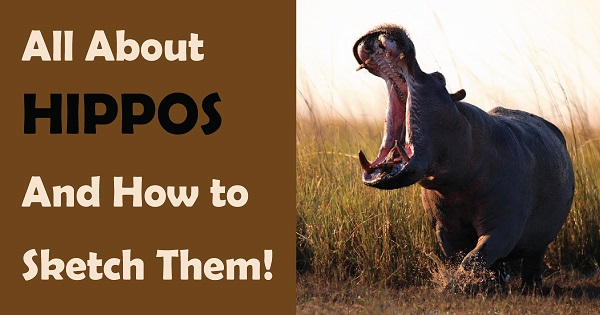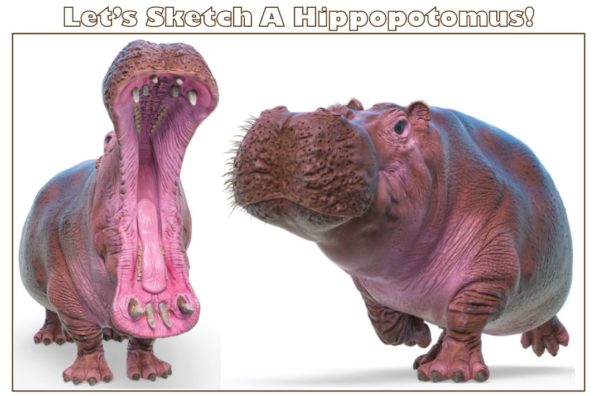Discover and Sketch the Hippopotamus
World Hippopotamus Day is observed on the 15th of February. Regardless of when you’re reading this, you can celebrate the hippopotamus with my workshop recording below. You’ll learn all about Africa’s two species of hippos, where they live, their anatomy, habits, and habitats, and why they are considered the most dangerous animal on the continent! Then I’ll lead you through a step-by-step sketching demonstration in which we will draw the hippos below.
If you’d like to follow along to the sketching demonstration, gather some pencils and page, then download the images of the hippo and the template in order to get the most out of this workshop.
Make sure to download the images of the hippo and the template in order to get the most out of this workshop.
CLICK HERE to download the high-resolution hippo image.
CLICK HERE to download the Peek-a-Boo Template.
Fascinating Facts About Hippopotamus
- There are two species of Hippopotamus; the Common Hippo and the Pygmy Hippo, both of which live in Africa.
- During the Pleistocene Era, the ancestors of today’s hippos roamed throughout Europe and there were even 3 species on the island of Madagascar, all of which went extinct.
- A group of hippos is called a bloat, pod, or siege. Such creative descriptions!
- Hippos are considered the most dangerous mammal in Africa, especially if they are encountered on land where they feel vulnerable if their route back to water is blocked.
- Hippos are the heaviest land animal, weighing up to 4,000 pounds and running at speeds up to 30 miles per hour.
- An adult hippo has no natural predators except man, even crocodiles and rhinos steer clear of them.
- Hippos are vegetarians but don’t eat aquatic plants; they spend their evenings grazing in meadows.
- Hippos spend 16 hours a day in water to keep cool and to protect their skin.
- Their skin is pink and nearly hairless and also lacks both sweat and sebaceous glands.
- Hippos can’t swim, but they move gracefully in the water by sinking to the bottom and bouncing along like aquatic astronauts. They even mate and give birth in the waters they call home.
- Hippos can live up to 50 years and spend most of their lives alone.
- Hippos are placed in their own family within the artiodactyl order and are most closely related to cetaceans, and not pigs as was once previously assumed.
- Hippos can open their mouths over 90 degrees wide to show off their incisors and canines that are large and tusk-like, although the canine tusks are by far the larger. The tusks grow throughout their life.
- Hippos are threatened with poaching for their meat and ivory as well as by habitat loss.



